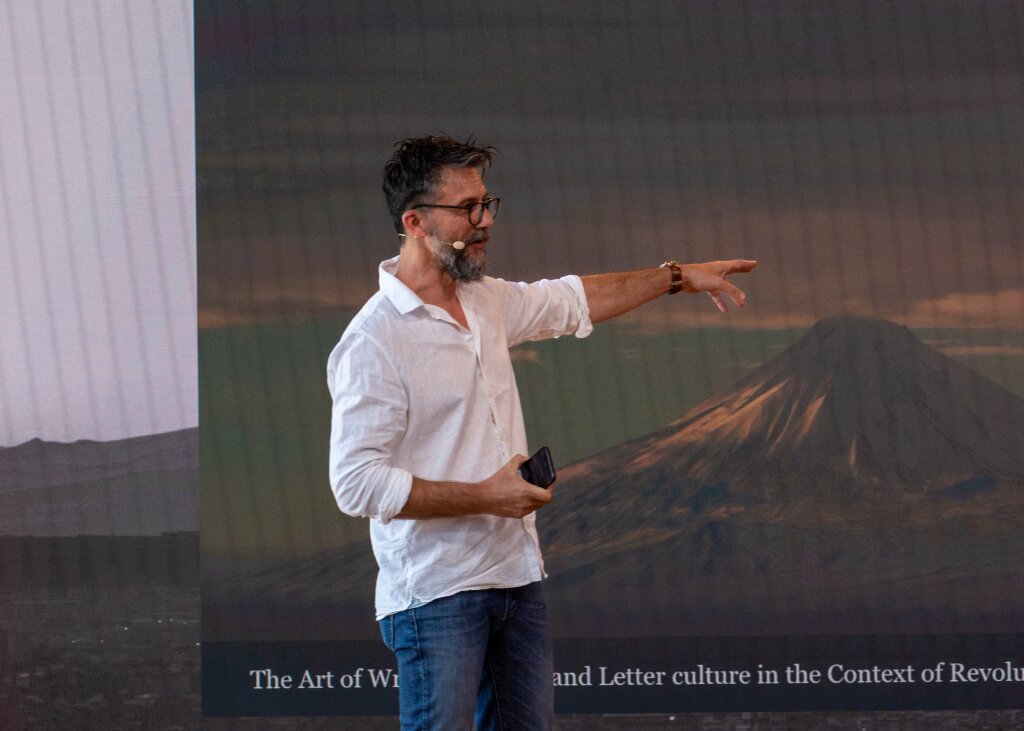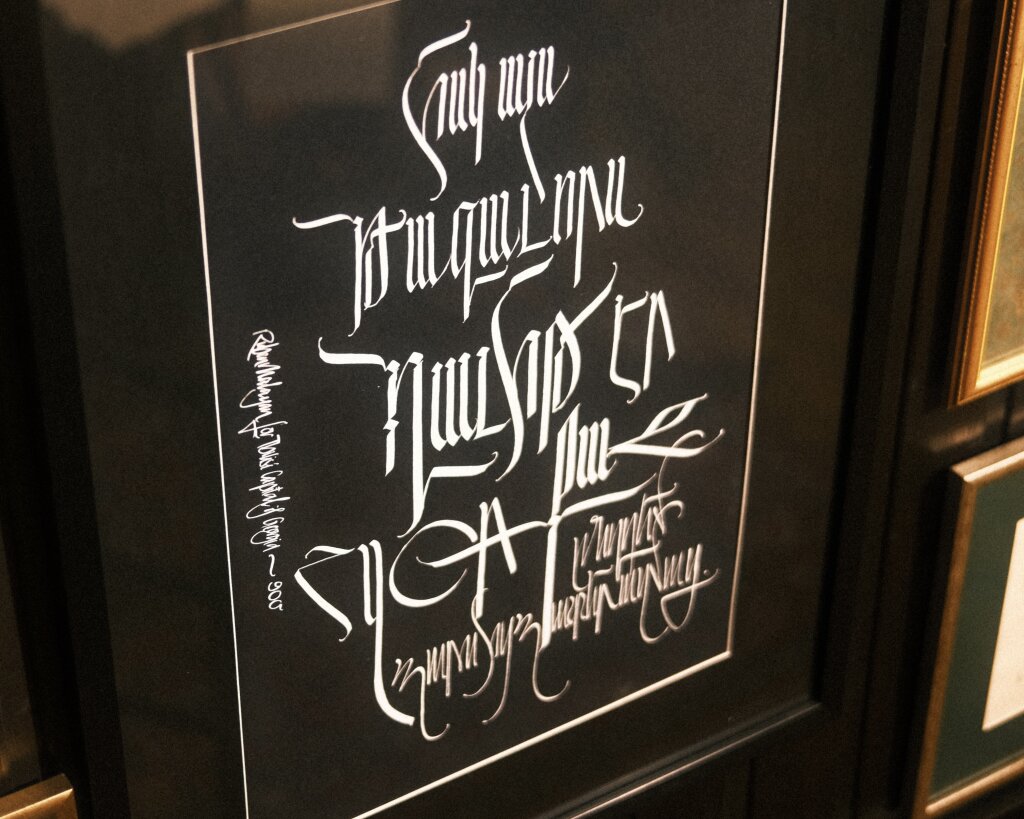Ruben Malayan has many passions: Fine art, languages, motorcycling. But his greatest passion is Armenian calligraphy. This is probably due to his father, the painter Petros Malayan, who shared his enthusiasm for art and beauty with his son from an early age. As a result, Ruben graduated from the Yerevan Art Institute, discovered his fascination with calligraphy and then travelled to Israel. There he worked in advertising and learnt Hebrew, one of the languages he speaks along with Armenian, Russian and English – although they all use different writing systems. From Israel, he travelled the world before returning to Armenia in 2011 to devote himself to the almost forgotten Armenian calligraphy.
No universal typography for the Armenian alphabet
According to Ruben Malayan, Armenia is in the midst of a cultural and political crisis. Since the collapse of the Soviet Union, he is not alone in lamenting the relative decline in education and the lack of knowledge of their own history among many Armenian pupils. The same goes for the history of writing, partly because there was no universal typography for the Armenian alphabet. The Soviet legacy in typography was a hodgepodge that disappeared with independence. So Ruben Malayan began to design Armenian calligraphy, both artistic and commissioned, for example as part of the visual identity of the Komitas Museum Institute in Yerevan or the Matenadaran Institute of Manuscripts. With his work, which often incorporates modern technology, the 53-year-old is reviving an art form that had almost died out.
»Typefaces are made to express human thoughts in graphic form. Good thoughts deserve well-designed letters.«
Social and political activism
Ruben Malayan is passionate about passing on his knowledge and enthusiasm for calligraphy and Armenian (art) history to the younger generation of designers. He teaches visual communication at the American University of Armenia and drawing and calligraphy at the Terlemezyan College of Arts. He also works as an art director and has worked on a number of international commercials and brandings over the years.
Ruben Malayan is also known for his social and political activism. For example, as the founder of the »Armenian Genocide in Contemporary Graphic & Art Posters« poster competition, which commemorates the Armenian Genocide. Or his »Armenian Revolution Posters« about the Velvet Revolution in Armenia in 2018.
»GRANSHAN is the flagship of the change here in Armenia.«
Expanding the educational programme
During the GRANSHAN Foundation’s study trip to Georgia and Armenia in September, the participants also met Ruben Malayan. In front of the Matenadaran, the Mesrop-Mashtoz Institute for Ancient Manuscripts, GRANSHAN Chairwoman Veronika Burian spoke to him about the development of the GRANSHAN project in Armenia and the need to intensify and methodically expand the educational programme for type design and calligraphy. »The plan,« says Ruben Malayan, »is to start with a Bachelor's degree. Not like in Reading, where everything is focused on type design. The aim must be to understand type design as part of visual culture.«
In response to Veronika Burian’s question about whether there is a new generation of type designers and calligraphers in Armenia, Ruben Malayan replied: »The GRANSHAN project has definitely driven development, GRANSHAN is the flagship of change. So the change is coming whether you like it or not, because there is a new generation and with them comes a new perspective on what type design is.«

